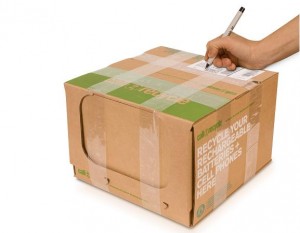 The key to successful shipping is good packing. Properly packing an item will ensure that it will arrive on time and in good condition. Here are important packing and shipping guidelines to help ensure that your items are delivered intact and in good condition.
The key to successful shipping is good packing. Properly packing an item will ensure that it will arrive on time and in good condition. Here are important packing and shipping guidelines to help ensure that your items are delivered intact and in good condition.
Shipping boxes
Only use rigid boxes with flaps that are intact. New boxes are ideal but if you have to reuse a box, make sure that it is still sturdy and can provide optimum protection for your shipment. It should not have any punctures, tears, rips, or corner damages. Also remove any labels, hazardous materials indicators, and other previous shipment markings on the box that are no longer applicable.
Internal protection
Prevent breakages and other damages such as scratches and dents by
cushioning the contents of your package properly. Wrap each item separately with the right cushioning material, giving special attention to corners and other protruding part that are susceptible to damages.
Each item should be surrounded by at least two inches (5.08 cm) of cushioning and be placed at least two inches (5.08 cm) away from the walls of the box to prevent product-against-product damages. Cushioning will also eliminate damages due to shock and vibration which can pass from the outside of the box to the contents.
Make sure that items fits snugly in the box and empty spaces are filled with sufficient packing materials to ensure that the contents do not move when the box is shaken.
Avoid using improper cushioning materials. Instead, only use materials that will provide optimum cushioning and protection to your shipment:
- Air-encapsulated plastic
- Inflatable packaging (air bags)
- Expanded polystyrene “peanuts” (loose fill)
- Anti-static peanuts – should be used for electronic items. Wrap items in plastic bags or bubble sheeting to prevent peanuts from going into areas that may cause harm to your goods.
- Engineered foam enclosures
- Foam-in-place/Foam-in-bag
- Corrugated liners and inserts
- Crumpled kraft paper – only use for light-to-medium weight, non-fragile items and items that are suitable for such packing materials
Closing and sealing
Your package must be properly sealed and secured to prevent it from bursting open and discourage possible pilferage. Never use masking tape, cellophane tape, duct tape, string, or paper over-wrap to seal your package. Instead, use heavy duty packaging tape that is al least two inches (5.08 cm) in width. The best packaging tapes to use are Pressure-sensitive plastic tape and Nylon reinforced filament tape.
Labeling
To avoid problems and delays, the package must be properly addressed and labeled. Here are some important considerations when labeling your package:
- Provide the recipient’s complete street address with zip code.
- When shipping to a P.O. Box address, include the recipient´s telephone number.
- Place the shipping label on the top of the package. To avoid confusion, place only one address label on the package. If you are using a packing slip, place it on the same surface of the package as the address label.
- Never place the label over a seam or closure or on top of sealing tape.
- Remove old labels or markings on a used box.
- Always include your complete return address.
- Place a duplicate label or other form of identification inside your package.
